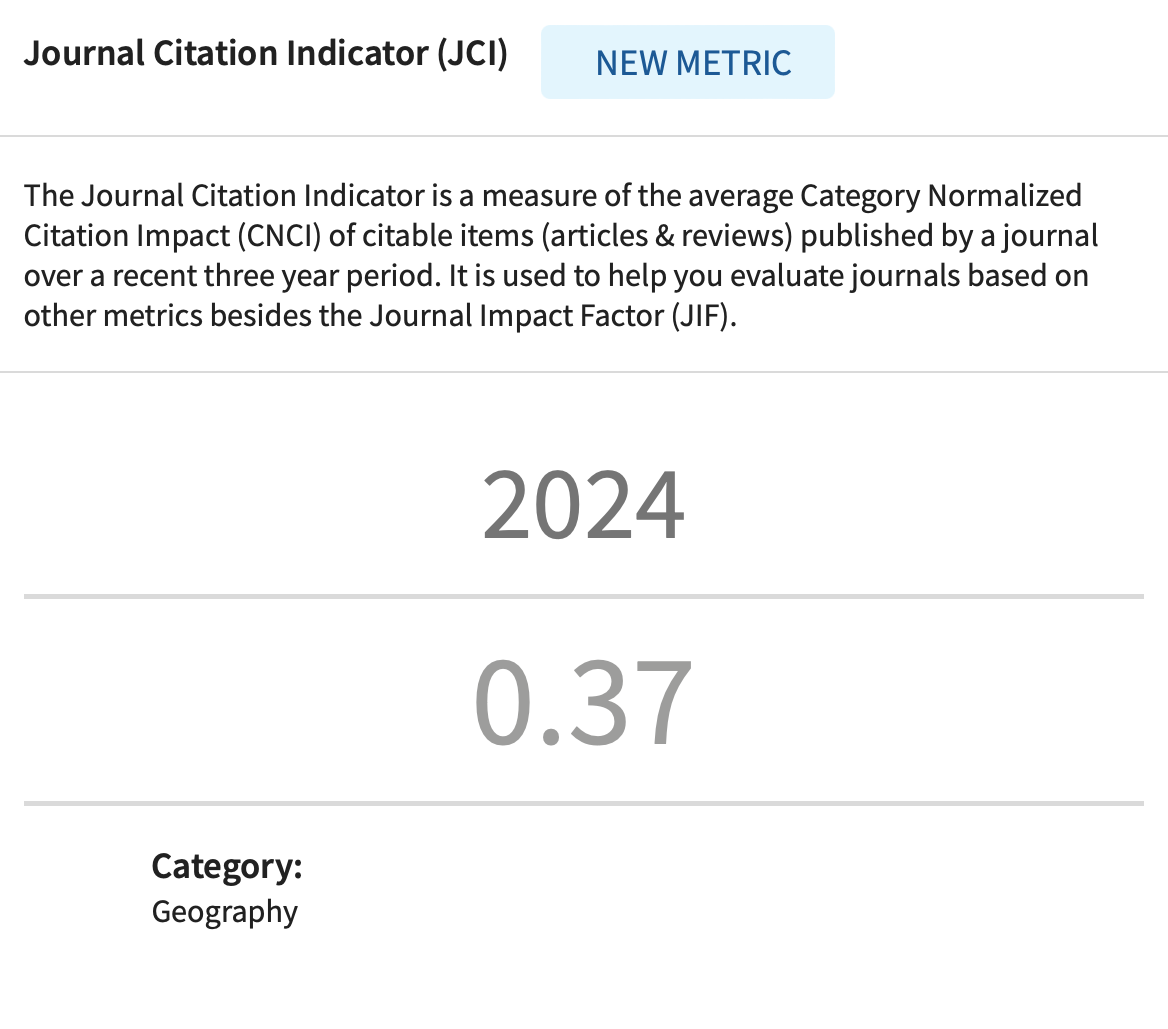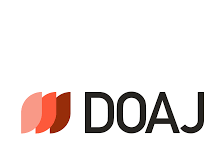STRENGTHENING COMMUNITY-BASED TOURISM THROUGH THE 4P MODEL: THE SELECTED COASTAL TOURISM CASE IN INDONESIA
DOI:
https://doi.org/10.2298/IJGI241230012FKeywords:
sustainable tourism, public-private-people partnership, Pantai Panjang, Bengkulu ProvinceAbstract
Indonesia's coastal tourism offers significant potential for sustainable development. Yet, challenges persist in aligning community-based tourism (CBT) practices with sustainable tourism principles. This study examines partnership practices in the development of CBT at Pantai Panjang (Long Beach), Bengkulu Province, Indonesia, and evaluates its achievements to propose a Public-Private-People Partnership (4P) model. Using a qualitative approach, data were gathered between June and August 2024 through four techniques including focus group discussion (FGD), in-depth interviews, observations, and document analysis. A total of 14 informants participated, comprising representatives from the public sector, informal sector, tourism-awareness groups (Pokdarwis), and local communities. The findings indicate that CBT implementation at Pantai Panjang is hindered by low community participation, the limited role of Pokdarwis in decision-making processes, and the inadequacy of infrastructure and supporting facilities, resulting in suboptimal outcomes. Existing partnerships, particularly between the government and Pokdarwis, tend to prioritize specific economic interests rather than fostering comprehensive community empowerment. To address these challenges, this study recommends adopting a 4P model to enhance community involvement, facilitate stakeholder collaboration, and strengthen tourism sustainability. Strategic actions such as restructuring Pokdarwis, building local capacity, and establishing inclusive regulations are proposed to optimize Pantai Panjang’s potential as a sustainable community-based tourism destination.
Article metrics
References
Abreu, L. A. de, Walkowski, M. da C., Perinotto, A. R. C., & Fonseca, J. F. da. (2024). Community-Based Tourism and Best Practices with the Sustainable Development Goals. Administrative Sciences, 14(2), Article 36. https://doi.org/10.3390/admsci14020036
Andersen, I. M. V., Blichfeldt, B. S., & Liburd, J. J. (2018). Sustainability in coastal tourism development: an example from Denmark. Current Issues in Tourism, 21(12), 1329–1336. https://doi.org/10.1080/13683500.2016.1272557
Anggoro, D. D., Ramadhan, H. M., & Ngindana, R. (2022). Public Private Partnership in Tourism: Build Up a Digitalization Financial Management Model. Policy & Governance Review, 6(3), 282–296. https://doi.org/10.3390/admsci14020036
Anggraini, M. (2024, November 5). Kumuh, Lingkungan Pantai Panjang Bengkulu di Penuhi Sampah [Slum, Pantai Panjang Environment Filled with Garbage]. Siberzone.id. https://siberzone.id/kumuh-lingkungan-pantai-panjang-bengkulu-di-penuhi-sampah
Apriliani, A., Rita, R., & Azahari, R. (2018). Kemitraan Pemerintah Dan Swasta Dalam Pengembangan Wisata Geopark Ciletuh-Palabuhan Ratu Kabupaten Sukabumi [Public-Private Partnership in Developing Ciletuh-Palabuhan Ratu Geopark Tourism in Sukabumi Regency]. Administratie Jurnal Administrasi Publik, 1(1), 30–38. https://www.researchgate.net/publication/341725601_KEMITRAAN_PEMERINTAH_DAN_SWASTA_DALAM_PENGEMBANGAN_WISATA_GEOPARK_CILETUH-PALABUHAN_RATU_KABUPATEN_SUKABUMI
Arianti, D. (2014). Pengaruh Sektor Pariwisata Terhadap Perekonomian dan Keruangan Kota Bukittinggi (Pendekatan Analisis Input Output) [The Influence of Tourism Sector on the Economy and Spatial Structure of Bukittinggi City (Input-Output Analysis Approach)]. Jurnal Wilayah dan Lingkungan, 2(3), 183–196. https://doi.org/10.14710/jwl.2.3.183-196
Aribowo, R. (2024, October 8). Banyak Fasilitas Wisata Pantai Panjang Rusak Parah [Many Pantai Panjang Tourist Facilities Severely Damaged]. Radio Republik Indonesia. https://www.rri.co.id/daerah/1032494/banyak-fasilitas-wisata-pantai-panjang-rusak-parah
Arintoko, A., Ahmad, A. A., Gunawan, D. S., & Supadi, S. (2020). Community-based tourism village development strategies: A case of Borobudur tourism village area, Indonesia. Geojournal of Tourism and Geosites, 29(2), 398–413. https://doi.org/10.30892/gtg.29202-477
Armenski, T., Dwyer, L., & Pavluković, V. (2018). Destination Competitiveness: Public and Private Sector Tourism Management in Serbia. Journal of Travel Research, 57(3), 384–398. https://doi.org/10.1177/0047287517692445
Arrsa, R. C., Ningtyas, A. P., & Sutanto, F. A. (2021). Legal Framework For The Establishment of A Local-Owned Banking Enterprise: Study In Batu City. Jurnal IUS Kajian Hukum Dan Keadilan, 9(2), 268–286. https://doi.org/10.29303/ius.v9i2.896
Azwar, H., Hanafiah, M. H., Ghani, A. A., Azinuddin, M., & Shariffuddin, N. S. M. (2023). Community-Based Tourism (CBT) Moving Forward: Penta Helix Development Strategy Through Community Local Wisdom Empowerment. Planning Malaysia, 21(1), 72–88. https://doi.org/10.21837/PM.V21I25.1225
Bagasta, A. R., Iswara, C., & Lasally, A. (2021). Analisis Potensi Wisata Menggunakan InformasI Geografis Dan Strategi Pengembangan Pariwisata Berkelanjutan Berbasis Masyarakat Di Desa Sumberagung, Grobogan, Jawa Tengah [Tourism Potential Analysis Using Geographic Information and Community-Based Sustainable Tourism Development Strategies in Sumberagung Village, Grobogan, Central Java]. Jurnal Kepariwisataan Indonesia: Jurnal Penelitian Dan Pengembangan Kepariwisataan Indonesia, 15(2), 148–157. https://doi.org/10.47608/jki.v15i22021.148-157
Barbat, N. C. T., Eschalier, C., Burke, E., Carrie, B. D., Delay, J., Jamieson, J., Lawrence, D. W., Rai, R., Tront, J. M., & Frances Wilson, A. (2017). PPIAF Enabling Infrastructure Investment : A PPP Screening Tool - PPP Support of the Nile Equatorial Lakes Subsidiary Action Program (English). PPIAF Issue Brief Washington, D.C. World Bank Group. Retrieved from: http://documents.worldbank.org/curated/en/475871635224374972
Boniotti, C. (2023). The public–private–people partnership (P4) for cultural heritage management purposes. Journal of Cultural Heritage Management and Sustainable Development, 13(1), 1–14. https://doi.org/10.1108/JCHMSD-12-2020-0186
Burak, S., Dogˇan, E., & Gaziogˇlu, C. (2004). Impact of urbanization and tourism on coastal environment. Ocean & Coastal Management, 47(9), 515–527. https://doi.org/https://doi.org/10.1016/j.ocecoaman.2004.07.007
Dangi, T. B., & Jamal, T. (2016). An Integrated Approach to “Sustainable Community-Based Tourism”. Sustainability, 8(5), Article 475. https://doi.org/10.3390/su8050475
Djabbari, M. H., Alwi, & Suryadi. (2021). Public Private Partnership Model in Tourism Development in North Toraja District. Enrichment: Journal of Management, 11(2), 378–382. https://doi.org/10.17762/pae.v58i3.4484
Dogramadjieva, E., & Tylko, K. (2023). European Capital of Culture Plovdiv 2019: Effects Through the Lens of the Local Community. Journal of the Geographical Institute “Jovan Cvijić” SASA, 73(1), 49–63. https://doi.org/10.2298/IJGI2301049D
Dolezal, C., & Novelli, M. (2022). Power in community-based tourism: Empowerment and partnership in Bali. Journal of Sustainable Tourism, 30(10), 2352–2370. https://doi.org/10.1080/09669582.2020.1838527
Esichaikul, R., & Chansawang, R. (2022). Community participation in heritage tourism management of Sukhothai historical park. International Journal of Tourism Cities, 8(4), 897–911. https://doi.org/10.1108/IJTC-03-2021-0035
Gauchan, D. (2014). Socioeconomic and Institutional Context of Governance of Agricultural Research in Nepal. Socioeconomics and Agricultural Research Policy Division, Nepal Agricultural Research Council. https://opac.narc.gov.np/opac_css/index.php?lvl=notice_display&id=16380
Giampiccoli, A., & Saayman, M. (2018). Community-based tourism development model and community participation. African Journal of Hospitality, Tourism and Leisure, 7(4), 1–27. https://www.ajhtl.com/uploads/7/1/6/3/7163688/article_16_vol_7_4__2018.pdf
Goodwin, H., & Santilli, R. (2009). Community-Based Tourism: a Success? ICRT Occasional Paper 11, 11(1), 1–37. http://www.andamandiscoveries.com/press/press-harold-goodwin.pdf
Graci, S. (2016). Collaboration and partnership development for sustainable tourism. In J. Saarinen (Ed.), Understanding Tropical Coastal and Island Tourism Development (pp. 25–42). Routledge. https://doi.org/10.1201/9780429324253-14
Gutierrez, E. L. M. (2023). Re-examining the participation and empowerment nexus: Applications to community-based tourism. World Development Perspectives, 31, Article 100518. https://doi.org/10.1016/j.wdp.2023.100518
Hailuddin, H., Suryatni, M., Yuliadi, I., Canon, S., Syaparuddin, S., & Endri, E. (2022). Beach Area Development Strategy as the Prime Tourism Area in Indonesia. Journal of Environmental Management and Tourism, 13(2), 414–426. https://doi.org/10.14505/jemt.13.2(58).11
Hamzah, A., & Khalifah, Z. (2009). Handbook on Community Based Tourism “How to Develop and Sustain CBT.” Asia-Pacific Economic Cooperation. https://www.apec.org/docs/default-source/Publications/2009/12/Handbook-on-Community-Based-Tourism-How-to-Develop-and-Sustain-CBT-December-2009/09_twg_developCBT.pdf
Handoko, W., Djanegara, M. S., Irawati, I., & Suwarno, S. (2023). Enhancing Community Participation for Sustainable Coastal Empowerment: A Case Study of the Resilient Coastal Area Development Program in Central Java. Research Horizon, 3(4), 378–390. https://doi.org/10.54518/rh.3.4.2023.378-390
Hikmah, D. A., Maulana, A., & Kriswibowo, A. (2020). Public Private People Partnership as Tourism Development Strategy for Kepulauan Bawean. Jurnal Governansi, 6(1), 27–35. https://doi.org/10.30997/jgs.v6i1.2651
Hudson, B., Hunter, D., & Peckham, S. (2019). Policy failure and the policy-implementation gap: can policy support programs help? Policy Design and Practice, 2(1), 1–14. https://doi.org/10.1080/25741292.2018.1540378
Keers, B. B. M., & van Fenema, P. C. (2018). Managing risks in public-private partnership formation projects. International Journal of Project Management, 36(6), 861–875. https://doi.org/10.1016/j.ijproman.2018.05.001
Kementerian Pariwisata dan Ekonomi Kreatif. (2024). Peta Sebaran - Jejaring Desa Wisata [Distribution Map – Tourism Village Network]. Jadesta. Kemenparekraf.go.Id. https://jadesta.kemenparekraf.go.id/Sebaran
Komalasari, N. Y., & Herwangi, Y. (2023). Indikator Pariwisata Berkelanjutan - Perspektif Wisata Pesisir Pangandaran [Sustainable Tourism Indicators – Coastal Tourism Perspective in Pangandaran]. Creative Research Journal (Creative Research for West Java Development), 9(2), 73–88. https://doi.org/10.34147/crj.v9i2.314
Kriswibowo, A., Pramestya, E. A., & Prasetyo, K. (2020). Implementation of Public Private Partnership in The Development of Tourism in Sumenep District. Jurnal Ilmiah Ilmu Administrasi Publik: Jurnal Pemikiran dan Penelitian Administrasi Publik, 10(1), 213–224. https://doi.org/10.26858/jiap.v10i1.13661
Kumala, M., Soelistyo, A., & Nuraini, I. (2017). Analisis Potensi Sektor Pariwisata Sebagai Sektor Unggulan di Wilayah Jawa Timur [Analysis of Tourism Sector Potential as a Leading Sector in East Java Region]. Jurnal Ilmu Ekonomi, 1(4), 474–481. https://doi.org/10.22219/jie.v1i4.6285
Liu, B., Li, J., Wang, D., Liu, H., Wu, G., & Yuan, J. (2024). Public–private partnerships: a collaborative framework for ensuring project sustainable operations. Engineering, Construction and Architectural Management, 31(1), 264–289. https://doi.org/10.1108/ECAM-12-2021-1124
Malik, S., & Kaur, S. (2020). Multi-dimensional public–private partnership readiness index: a sub-national analysis of India. Transforming Government: People, Process and Policy, 15(4), 483–511. https://doi.org/10.1080/09669582.2020.1838527
McQuaid, R. W. (2000). The Theory of Partnership: Why Have Partnerships? In S. Osborne (Ed.), Public-Private Partnerships: Theory and Practice in International Perspective (pp. 9–35). Routledge.
Mohajan, D., & Mohajan, H. K. (2022). Exploration of Coding in Qualitative Data Analysis: Grounded Theory Perspective. Research and Advances in Education, 1(6), 50–60. https://doi.org/10.56397/rae.2022.12.07
Musaddun, Kurniawati, W., Dewi, S. P., & Ristianti, N. S. (2013). Bentuk Pengembangan Pariwisata Pesisir Berkelanjutan di Kabupaten Pekalongan [Forms of Sustainable Coastal Tourism Development in Pekalongan Regency]. Ruang, 1(2), 261–270. https://media.neliti.com/media/publications/220954-bentuk-pengembangan-pariwisata-pesisir-b.pdf
Ng, S. T., Wong, J. M. W., & Wong, K. K. W. (2013). A Public Private People Partnerships (P4) Process Framework for Infrastructure Development in Hong Kong. Cities, 31, 370–381. https://doi.org/https://doi.org/10.1016/j.cities.2012.12.002
Nugroho, M. S., Mas’ud, R., Khalik, W., Fahdiansyah, R., Azizoma, R., Romdhini, M. U., & Aminy, M. M. (2022). Coastal Tourism: Development Strategy of Loang Baloq Beach in Lombok Island, Indonesia. Journal of Environmental Management and Tourism, 13(4), 949–965. https://doi.org/10.14505/jemt.v13.4(60).04
Orbawati, E. B., Fadlurrahman, Sujatmiko, & Mukti, A. (2024). Empowering Communities Through the Desa Berdaya Program: Lessons from Bligo Village. Society, 12(2), 397–414. https://doi.org/10.33019/society.v12i2.445
Palimbunga, I. P. (2017). Bentuk Partisipasi Masyarakat Dalam Pengembangan Pariwisata di Kampung Wisata Tablanusu Kabupaten Jayapura Provinsi Papua: Kajian Pariwisata Budaya [Forms of Community Participation in Tourism Development at Tablanusu Tourism Village, Jayapura Regency, Papua Province: A Cultural Tourism Study]. MELANESIA: Jurnal Ilmiah Kajian Sastra Dan Bahasa, 1(2), 15–32. https://doi.org/10.30862/JM.V1I2.811
Peraturan Gubernur Bengkulu. (2023). Peraturan Gubernur Bengkulu Nomor 38 Tahun 2023 Tentang Tata Kelola Kawasan Destinasi Pariwisata Pantai Panjang [Governor Regulation of Bengkulu Number 38 of 2023 concerning Management of Pantai Panjang Tourism Destination Area]. https://peraturan.bpk.go.id/Details/282120/pergub-prov-bengkulu-no-38-tahun-2023
Phukamchanoada, P. (2022). Community-based tourism product development based on the community identity of Klong-Lad-Ma-Yom floating market Bangkok, Thailand. Turyzm/Tourism, 32(1), 59–76. https://doi.org/10.18778/0867-5856.32.1.03
Pratama, D. N. (2023). Kadis Pariwisata Provinsi Bengkulu Dianggap Tak “Becus” Urusi Pantai Panjang karena Belum Serah Terima Kondisi Auning Kios Pantai Panjang Makin Parah [Bengkulu Tourism Head Considered Incompetent in Managing Pantai Panjang Due to Delayed Kiosk Handover, Conditions Getting Worse]. https://www.jarrakpos.com/kadis-pariwisata-provinsi-bengkulu-dianggap-tak-becus-urusi-pantai-panjangkarena-belum-serah-terima-kondisi-auning-kios-pantai-panjang-makin-parah/
Pratiwi, N. G., & Warsono, H. (2018). Analisis Public-Private Partnership Dalam Pengembangan Objek Wisata Telaga Sarangan di Kabupaten Magetan. Jurnal Administrasi Publik, 7(2), 632–648. https://doi.org/10.14710/jppmr.v7i2.20319
Priatmoko, S., Kabil, M., Purwoko, Y., & Dávid, L. D. (2021). Rethinking Sustainable Community-Based Tourism: A Villager’s Point of View and Case Study in Pampang Village, Indonesia. Sustainability, 13(6), Article 3245. https://doi.org/10.3390/su13063245
Pribadi, T. I., Suganda, D., & Saefulla, K. (2021). Pariwisata Berbasis Masyarakat dan Dampaknya Terhadap Sosial, Ekonomi, dan Lingkungan: Tinjauan Pustaka [Community-Based Tourism and Its Impact on Social, Economic, and Environmental Aspects: A Literature Review]. Jurnal Sosial dan Sains, 1(2), 107–114. https://doi.org/10.59188/jurnalsosains.v1i2.34
Purbasari, N., & Asnawi. (2014). Keberhasilan Community Based Tourism di Desa Wisata Kembangarum, Pentingsari dan Nglanggeran [The Success of Community-Based Tourism in Kembangarum, Pentingsari, and Nglanggeran Tourism Villages]. Teknik PWK (Perencanaan Wilayah Kota), 3(3), 476–485. https://doi.org/10.14710/tpwk.2014.5619
Putri, S. R. P. D., & Frinaldi, A. (2023). Dampak Community Based Tourism dan Kemitraan Terhadap Kesejahteraan Masyarakat di Kawasan Kapalo Banda Nagari Taram Kabupaten Lima Puluh Kota [The Impact of Community-Based Tourism and Partnerships on Community Welfare in Kapalo Banda Nagari Taram Area, Lima Puluh Kota Regency]. Jurnal Pendidikan Tambusai, 7(2), 16174–16186. https://doi.org/10.31004/jptam.v7i2.8936
Rahman, Y., & Nugroho, P. (2016). Perubahan Perilaku Ekonomi Masyarakat Sebagai Dampak Pengembangan Pariwisata Alam Perdesaan: Studi Kasus Pemandu Wisata Air Terjun Nyarai Kecamatan Lubuk Alung, Provinsi Sumatera Barat [Changes in Community Economic Behavior Due to Rural Nature Tourism Development: A Case Study of Nyarai Waterfall Guides, Lubuk Alung District, West Sumatra]. Journal of Science and Applicative Technology, 1(1), 7–18. https://doi.org/10.35472/281419
Ramdani, Z., & Karyani, T. (2020). Partisipasi Masyarakat Dalam Pengembangan Agrowisata dan Dampaknya Terhadap Sosial Ekonomi Masyarakat (Studi Kasus Pada Agrowisata Kampung Flory, Sleman, Yogyakarta) [Community Participation in Agrotourism Development and Its Socio-Economic Impacts (Case Study of Kampung Flory Agrotourism, Sleman, Yogyakarta)]. Mimbar Agribisnis: Jurnal Pemikiran Masyarakat Ilmiah Berwawasan Agribisnis, 6(2), 675–689. https://doi.org/10.25157/ma.v6i2.3399
Romero-Medina, N., Flores-Tipán, E., Carvache-Franco, M., Carvache-Franco, O., Carvache-Franco, W., & González-Núñez, R. (2024). Organizational design for strengthening community-based tourism: Empowering stakeholders for self-organization and networking. PloS One, 19(1), Article e0294849. https://doi.org/10.1371/journal.pone.0294849
Rosa, Y. Del. (2019). Pariwisata Sebagai Sektor Unggulan Provinsi Sumatera Barat (Pendekatan Analisis Location Quotient) [Tourism as a Leading Sector in West Sumatra Province (Location Quotient Approach)]. Ekonomis: Journal of Economics and Business, 3(2), Article 208. https://doi.org/10.33087/ekonomis.v3i2.83
Seddighi, H., Seddighi, S., Salmani, I., & Sharifi Sedeh, M. (2021). Public-Private-People Partnerships (4P) for Improving the Response to COVID-19 in Iran. Disaster Medicine and Public Health Preparedness, 15(1), e44–e49. https://doi.org/10.1017/dmp.2020.202
Skietrys, E., Raipa, A., & Bartkus, E. V. (2008). Dimensions of the Efficiency of Public - Private Partnership. Engineering Economics, 58(3), 45–50. https://inzeko.ktu.lt/index.php/EE/article/view/11550
Soshkin, M., & Calderwood, L. U. (2022). Travel & Tourism Development Index 2021: Rebuilding for a Sustainable and Resilient Future, Insight Report May 2022. World Economic Forum. https://www3.weforum.org/docs/WEF_Travel_Tourism_Development_2021.pdf?fbclid=IwAR3TFDtMeHI_VxBcwW0lC9R1p-KuyqPITA_Sb5HBMZPzACm3M1o8TCe2Q9k
Sukriah, E. (2014). Pariwisata Sebagai Sektor Unggulan Kota Bandung [Tourism as a Leading Sector in Bandung City]. Jurnal Manajemen Resort & Leisure, 11(1), 65–74. https://doi.org/10.17509/jurel.v11i1.2904
Tien, N. H., Viet, P. Q., Duc, N. M., & Tam, V. T. (2021). Sustainability of tourism development in Vietnam’s coastal provinces. World Review of Entrepreneurship, Management and Sustainable Development, 17(5), 579–598. https://doi.org/10.1504/WREMSD.2021.117443
Toubes, D. R., Araújo-Vila, N., & Fraiz-Brea, J. A. (2021). Organizational learning capacity and sustainability challenges in times of crisis: A study on tourism SMEs in Galicia (Spain). Sustainability, 13(21), Article 11764. https://doi.org/10.3390/su132111764
Utama, D. (2010). Prinsip dan Strategi Penerapan Public Private Partnership Dalam Penyediaan Infrastruktur Transportasi [Principles and Strategies for Applying Public Private Partnerships in Providing Transportation Infrastructure]. Jurnal Sainds Dan Teknologi Indonesia, 12(3), 145–151. https://doi.org/10.29122/jsti.v12i3.857
Wahyuningtiyas, A., & Tukiman, T. (2022). Penerapan Community Based Tourism (CBT) Sebagai Strategi Dalam Pengelolaan Wisata [The Implementation of Community-Based Tourism (CBT) as a Strategy in Tourism Management]. Societas: Jurnal Ilmu Administrasi Dan Sosial, 11(1), 109–123. https://ejournal.unmus.ac.id/index.php/societas/article/view/4351/2304
Wang, H., Wei, X., Guangdong, W., & Zhu, D. (2018). Public–private partnership in public administration discipline: A literature review. Public Management Review, 20(2), 293–316. https://doi.org/10.1080/14719037.2017.1313445
Downloads
Published
How to Cite
Issue
Section
License
Copyright (c) 2025 Journal of the Geographical Institute “Jovan Cvijić” SASA

This work is licensed under a Creative Commons Attribution 4.0 International License.











